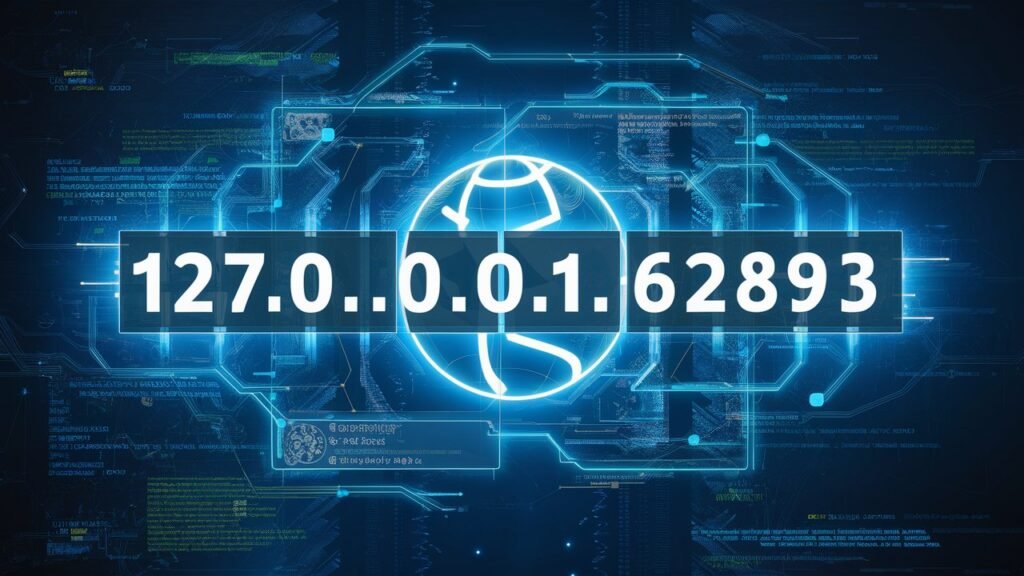127.0.0.1 is not just any IP address; it’s your computer talking to itself. Known as the localhost, it’s a standard IP used to denote your own local computer, also referred to as the loopback address. Whenever software on your computer tries to connect to 127.0.0.1, it is routed back to the local machine.
Port 62893, on the other hand, is like a specific door on this local address. Different applications on your computer use different port numbers to run their services, and when you access 127.0.0.1:62893, you’re trying to communicate with a specific service operating on this port. Understanding this address and port combination is crucial for various local testing and development scenarios, where you might need to run a server or service in a safe, controlled environment.
Table of Contents
Technical Breakdown of IP Addresses and Ports
IP addresses are unique strings of numbers separated by periods that identify each computer using the Internet Protocol to communicate over a network. The structure of an IP address in IPv4, the most commonly used version, is made up of four sets of numbers ranging from 0 to 255. This allows for over four billion unique addresses. A port number, which is associated with the IP address, identifies specific services running on a computer. Port numbers range from 0 to 65535, with different ports designated for different services.
The combination of an IP address and a port number forms a socket, which is essential for the operation of network services. For instance, accessing 127.0.0.1:62893 means you are reaching out to a service running on port 62893 of your local machine. Understanding these basics helps in configuring and managing network services more effectively, ensuring they operate smoothly without conflicts.
The Significance of Localhost in Networking
The term “localhost” refers to the computer you’re currently using. It’s a concept utilized primarily in networking and development to test programs and services without the need to connect to the internet. By using 127.0.0.1, developers ensure that their software communicates internally within the same machine. This setup is crucial for development environments, as it allows for testing in a controlled and secure manner before deployment.
Moreover, localhost is used not just by developers; it’s also fundamental in network troubleshooting and configuration. By accessing your localhost, you can review and manage your current network settings, run servers, and perform security checks without external interference, making it a valuable tool for both novice users and experienced IT professionals.
How to Access and Use Localhost:62893
To access services running on localhost:62893, you can typically enter the address into your web browser’s URL bar if it’s a web service. However, the specific steps may vary depending on the application running on that port. For example, if a web development environment is set up on that port, loading 127.0.0.1:62893 would bring up the local development site. This method is commonly used by developers to test their web applications locally before they go live on the internet.
It’s also important to note that accessing localhost requires that a service is actively running on the specified port. If no service is active on port 62893, you’ll receive an error such as “Cannot reach the site” or “Connection refused.” This prompts the need to start a server on that port or check whether the correct port number is being accessed for your specific application.
Troubleshooting Common Issues with Localhost Connections
Encountering issues when connecting to localhost can be frustrating. Common problems include the service not running on the specified port, firewall settings blocking the connection, or configuration errors in the network settings. To resolve these, ensure that the service you’re trying to access is active and listening on port 62893. Tools like the command line can be used to check this with commands like netstat or lsof.
Another tip is to verify your firewall and antivirus settings. Sometimes, these programs can block connections to certain ports due to security policies. Adjusting these settings to allow access to port 62893 can resolve the connection issues. Lastly, double-checking the service’s configuration files for any errors or missettings can help clear up any lingering connection problems.
Security Implications of Running Services on Localhost
Running services on localhost is generally considered safe as it restricts access to your own machine. However, if these services are configured to accept external connections or if vulnerabilities are present, it can pose a risk. Ensuring that services running on localhost are secured is as crucial as securing any internet-facing service. This includes setting strong passwords, using updated software, and regularly scanning for vulnerabilities.
Additionally, while port 62893 is designated for local use, it’s wise to be cautious about what services you run and their access configurations. For enhanced security, services on localhost should be run with the least privileges necessary, reducing the risk of damage if the service is compromised. Implementing robust logging and monitoring on this port can also help detect and respond to unauthorized access attempts promptly.
Conclusion
Understanding 127.0.0.1:62893 opens up a world of possibilities for testing, developing, and managing applications on your local machine securely and efficiently. By grasping how localhost and port numbers function, users can better manage their internal services and prepare them for production environments. Whether you are a software developer, an IT professional, or just a curious learner, knowing how to navigate and utilize your local network environment is an invaluable skill in the digital age.
Read More : Aiyifan







